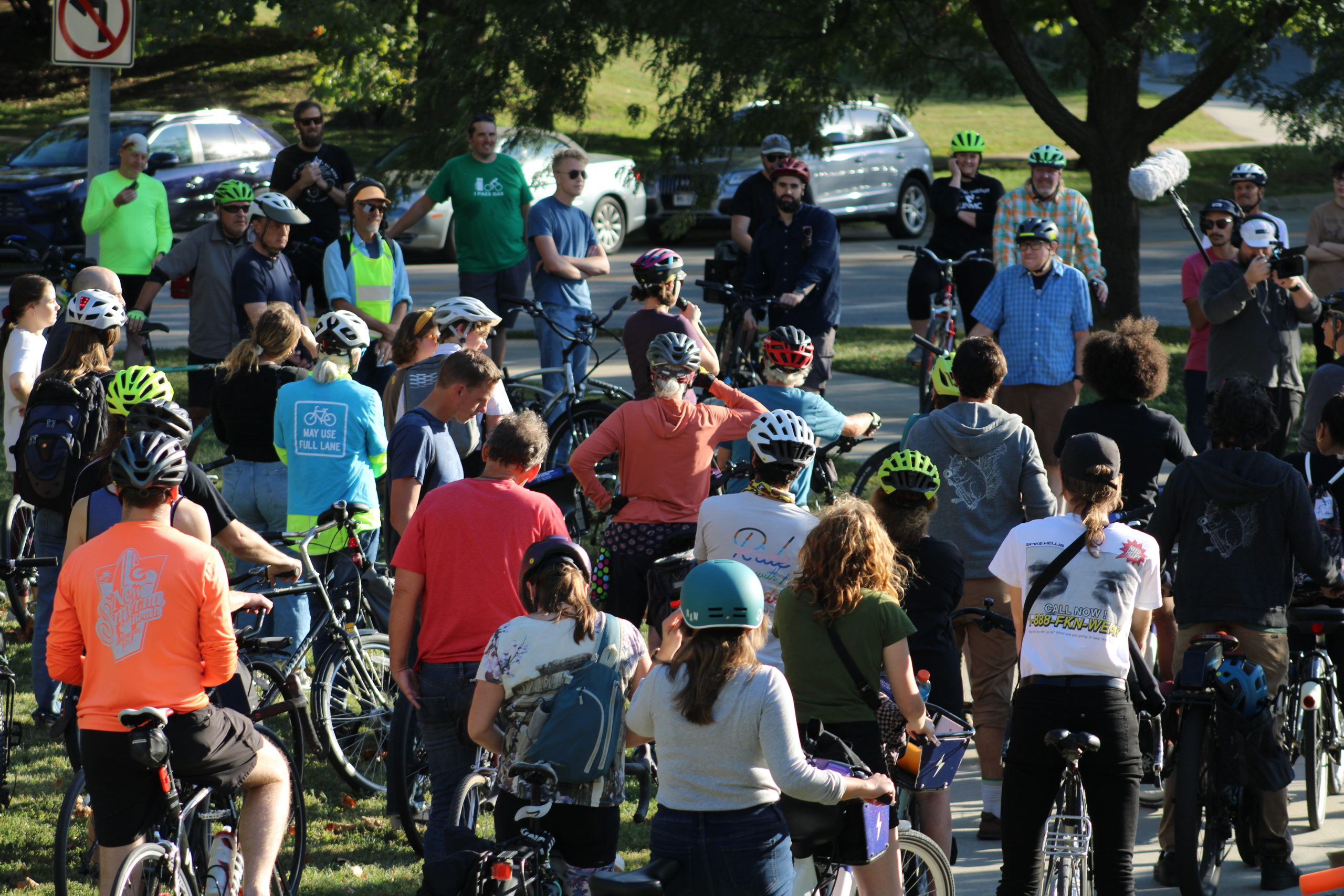We invited Carter Eberhardt to speak at our July member meeting about a specific pedestrian issue that was raised by some members around the construction project at the Benson Theater. Carter listened to the concerns and provided a valuable perspective as to how contractors and builders slot into the transportation ecosystem. We wanted to have a longer conversation with him, so we invited him to be the guest at our August Coffee Chat, this Friday, August 21st. 8 a.m.
To prepare for the chat, we asked him five questions:
Lund-Ross has experience with in-fill, rehabilitation, brown-field and green-field development. How do transportation considerations vary depending on the type of project?
For us the biggest consideration with regards to transportation when building a project is safety. Each project is so different and has unique sets of transportation related hurdles to consider. It is ideal to have a project with a large area that we can have workers, equipment and delivery trucks all contained within the boundaries of the site. This is often not the case, especially when doing remodels in urban environments. In these situations we have to pay special consideration to where delivery trucks can be safely unloaded. A couple things that we really try to focus on in situations like this are:
- Try to get a good feel for the area’s circadian rhythm with regards to pedestrian traffic and vehicular traffic. Once we have a good feel for this we can be strategic about when we have deliveries or if we need to block the street we do it at times that are the least disruptive and safest for our workers.
- Make sure our job site is very obvious and clearly marked to both pedestrians and motorists. The goal is to avoid surprises and give people the opportunity to alter their route with plenty of warning.
- Ensure our jobsites are well secured to keep both pedestrian traffic and vehicular traffic from accidently coming on site and being exposed to a potentially dangerous situation.
A lot of your projects have been in historic areas of the city. How does parking, access to transit and pedestrian accessibility fit into those projects?
These projects are always difficult. When in these situations we always do our best to leave an area for pedestrians to safely walk past our site, this is not always achievable. If the City allows, we try to rent “bag” as many parking spaces in front of the project as possible to keep cars and pedestrians at a safe distance.
Most importantly, we have to stay flexible in these situations and be willing to change our barricading/parking plans with what we are experiencing. In the end we are dealing with human behavior which is inherently unpredictable. So when we notice our plan is not producing the results we were expecting and possibly putting pedestrians/cars in unsafe situations we must be willing to change our plans right away.
Our organization focuses, often, on the attributes of a finished project, and how it fits into the transportation ecosystem. What are the roles of the architects, developer and contractor as it relates to transportation accessibility?
Owners/developers are the key. What is built is a direct reflection of the owner/developer’s priorities. The code and city requirements define a minimum, anything above and beyond this is at the discretion of the owner/developer.
What is a Lund-Ross project you are particularly proud of and why?
The Early Leaning Center at Kennedy
I am most proud of this project because of the services this project provides. In essence the goal and services provided at this building focus on those children most at risk and provides them an exceptional research based early education so that when they go to kindergarten they have every tool they need to succeed. I have been so impressed with the people that work in this area and the lengths they are willing to go to ensure that these kids have the best chance at success possible.
Here is a link to their website, I am not doing them the justice they deserve.
If you could magically change one thing in Omaha with regard to transportation what would it be?
Make public transportation more practical.
I see the lack of practical public transportation as a very large contributor to the inequities within our city. In a city as large as ours, having a car should not have the oversized impact on a persons earning potential that it currently does.
Wider, better maintained sidewalks. Especially in the areas of town where a large portion of the population often walk as a their form of transportation.
I have worked in North Omaha on North 30th Street for 5 years now and am constantly appalled with the amount of people that have to walk in the street due to the condition of the city’s sidewalks in this area. It is especially bad in the winter when snow is piled on the sidewalks. To make maters worse, there are 3 schools right along this stretch of road.

